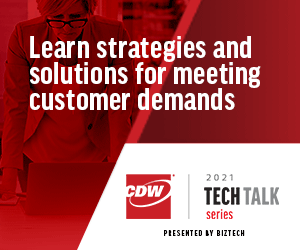Organizations Have Been Migrating to Multicloud Environments
“What elements are involved in this ultimate objective that we’re talking about, for improving app experiences?” Koppelman asked. “It’s really about optimizing this multicloud experience. VMware was involved early in virtualizing applications. And when that happened, companies moved into these big, consolidated data centers, and they deployed virtualized apps in scalable compute infrastructures.”
However, after creating large data centers, Koppelman said, many organizations began to migrate to the cloud. Once they’d moved to the cloud, many of them found it still didn’t meet all their needs. “We started to see some kind of snapback into physical data centers within our customers’ premises. But now, things have really started to accelerate with this distributed workforce, this acceleration of Software as a Service and things like this, into this multicloud world. The trick now is really optimizing in a multicloud world.”
When considering how to optimize a multicloud environment, Koppelman said, connectivity is critical: “It’s not the sexiest thing to talk about, but it is still the foundation of being able to deliver that.”
“They need to address security concerns — being able to deliver security capabilities in a more distributed fashion as opposed to a traditional perimeter kind of focus. And they need to also deliver technologies that really give them observability, not only into their infrastructure but also into how applications perform,” Koppelman said.
When Building a Dynamic Infrastructure, Security Is a Top Priority
Koppelman listed the main priorities organizations should keep in mind when updating their IT environments to be more dynamic. “Priority one when I talked to every CIO is security, and essentially operationalizing this concept of zero trust.”
Providing a consistent experience for all employees, no matter where they’re working, is another priority for Koppelman. “That’s a critical foundational element, certainly, enabling work from anywhere. So, a consistent experience for their users, whether they’re in a home office, like I am today, or they’re on a campus, or they’re doing both, a couple days each.”
Finally, he pointed out the importance of speeding up the development and deployment of applications. He described the need to accelerate “deployments of applications in a multicloud world and get away from these traditional architectures that have slowed that down, and deploy software-based architectures that are distributed and secure, that allow you to accelerate those application deployments.”













